Callum McLaughlin's Blog, page 7
July 31, 2021
July Wrap Up
It definitely felt like I started to break out of my reading slump somewhat throughout July. Though the number of books I finished remained on the low side (compared to my usual pace), there were definitely more full length works in the mix this time, which is a decent step in the right direction.
The overall quality of what I picked up was also pretty good, so let’s hope this upturn continues into August! I’m feeling optimistic that it will, given that it’s Women in Translation Month – which I love! But without further ado, here’s a quick glimpse at what I read this month (with links to full reviews if you’d like to know more), followed by a look at some recent embroidery projects.
Books read: 8
Yearly total: 59
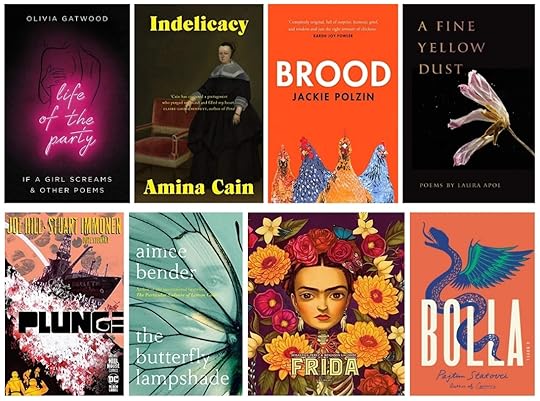
The books I read in July
1. Indelicacy by Amina Cain


 | Review
| Review
2. Brood by Jackie Polzin



 | Review
| Review
3. Bolla by Pajtim Statovci, tr. by David Hackston



 | Review to come for BookBrowse
| Review to come for BookBrowse
4. Life of the Party by Olivia Gatwood


 | Review
| Review
5. Plunge by Joe Hill & Stuart Immonen



 | Review
| Review
6. The Butterfly Lampshade by Aimee Bender



 | Review
| Review
7. A Fine Yellow Dust by Laura Apol



 | Review
| Review
8. Frida by Sébastien Pérez & Benjamin Lacombe, tr. by Alison Anderson



 | Review to come
| Review to come
Favourite of the month: The Butterfly Lampshade & Frida
In terms of embroidery, I really enjoyed working on some more original designs throughout the month, which resulted in a couple of landscapes, a seascape, and a tribute piece to Frida Kahlo. I also tried out some embroidered jewellery for the first time, which was a lot of fun! As before, you can find available pieces over on my Etsy.

Thanks for stopping by! What’s the best thing you read or did in July?
July 27, 2021
A Fine Yellow Dust by Laura Apol | Book Review
A Fine Yellow Dust by Laura Apol
Published by Michigan State University Press, 2021
Rating: 



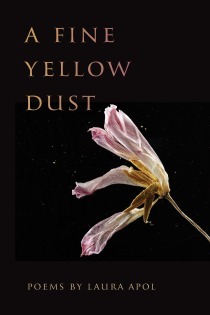 In 2017, Apol’s 26-year-old daughter took her own life. Having spent a decade running workshops on the merits of healing through writing, she suddenly found herself having to follow her own advice in order to make it through the pain. Chronicling the year immediately following her daughter’s death, this collection explores the complex mix of anguish, guilt, fury, and hope that typify the grieving process. With her stark honesty, Apol also aims to break down the stigma of discussing mental health, trauma, and suicide, so that others may be spared the same fate.
In 2017, Apol’s 26-year-old daughter took her own life. Having spent a decade running workshops on the merits of healing through writing, she suddenly found herself having to follow her own advice in order to make it through the pain. Chronicling the year immediately following her daughter’s death, this collection explores the complex mix of anguish, guilt, fury, and hope that typify the grieving process. With her stark honesty, Apol also aims to break down the stigma of discussing mental health, trauma, and suicide, so that others may be spared the same fate.
The very nature of the subject matter means the book can be hard going, and though Apol’s style is very accessible, the collection is probably best absorbed when tackled in short bursts. As pointed out by Apol herself in the afterword, the early poems, written in the immediate aftermath of her daughter’s death, are short, intense, and straightforward. From a craft perspective, it is interesting to watch the quality of the writing and imagery develop over time, as she increasingly finds the language to discuss her situation.
Despite the tight thematic focus, the collection never feels repetitive. Apol regularly employs strong though easy-to-dissect metaphors, and hits you in the gut with lines of simple beauty: “All day, I circle / the space in me / that was her.”
Also discussed in her afterword, I greatly admire the motivation behind Apol’s decision to make these pieces public. They serve as a eulogy to a multi-faceted, much-missed daughter, and are sure to resonate with anyone who has experienced sudden loss – particularly to suicide. Her depiction of pain and fierce love (the likes of which can become so difficult to see in others when we’re on the brink) may also act as a lifeline for those who need it, inspiring them to hold on and reach out for help.
Thank you to the publisher for a free advanced copy in exchange for an honest review.
July 22, 2021
The Butterfly Lampshade by Aimee Bender | Book Review
The Butterfly Lampshade by Aimee Bender
Published by Hutchinson, 2020
Rating: 



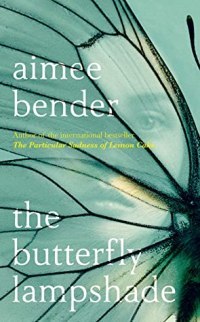 A quiet exploration of family, trauma, and mental health, The Butterfly Lampshade follows Francie as she reflects on a particularly upsetting and unusual string of events that took place some 20 years prior. Then aged just 8, Francie was sent to live with her aunt and uncle following her mother’s latest and most severe psychotic break, which resulted in her hospitalisation. In the days immediately following this incident, Francie became convinced that a real butterfly emerged from the design on her babysitter’s lampshade, and a beetle crawled from an image on a piece of paper. Years later, she experienced something similar, with a rose appearing to fall from the fabric of a pair of curtains.
A quiet exploration of family, trauma, and mental health, The Butterfly Lampshade follows Francie as she reflects on a particularly upsetting and unusual string of events that took place some 20 years prior. Then aged just 8, Francie was sent to live with her aunt and uncle following her mother’s latest and most severe psychotic break, which resulted in her hospitalisation. In the days immediately following this incident, Francie became convinced that a real butterfly emerged from the design on her babysitter’s lampshade, and a beetle crawled from an image on a piece of paper. Years later, she experienced something similar, with a rose appearing to fall from the fabric of a pair of curtains.
As an adult, Francie seeks to understand what these incidences mean about her own mental state and place within the world. Bender ensures they remain suitably mysterious, allowing us to question and interpret the possible answers for ourselves. I’m aware this all makes the novel sound rather odd and otherworldly, but the majority of its pages are in fact dedicated to very real and poignant reflections on Francie’s complex relationship with her mother. There is subtle but wonderful commentary on the stigma of mental health, the lingering influence of childhood trauma, and how closely fear, guilt, and love can intertwine when it comes to family.
Events play out in a fragmented, non-linear fashion. This cleverly reflects the nature of memory – which is itself a major theme within the novel – as Francie dips in and out of the past to piece together what happened all those years ago. Though much more character focussed than it is plot driven, a couple of scenes in particular really hit me in the gut, as underplayed revelations hint at just how much Francie continues to be influenced by her childhood.
Although the book is usually described as magical realism, I’m not sure that’s quite the right name for it. Francie is very much aware that the strange events mentioned are, indeed, strange. Not only does she discuss them with others, she actively seeks to understand what they may mean. As per the rest of the novel, the outcome of this search is deliberately understated, with the nature of the butterfly etc. left largely to the reader’s interpretation. To me, the butterfly, beetle, and rose were symbols of Francie’s disjointed sense of self; physical manifestations that essentially served as placeholders for her unaddressed trauma, as she was jolted from one life to another. It is only by interrogating the memories attached to them that she will learn to make peace and move on.
This was my first foray into Bender’s work, and I get the impression it’s less overtly strange than some of her other releases (despite what my review may imply). That said, I found it magnetic and affecting, and I would certainly consider diving into her back catalogue.
July 17, 2021
Olivia Gatwood & Joe Hill | Mini Reviews
Life of the Party by Olivia Gatwood
Published by Doubleday, 2020
Rating: 


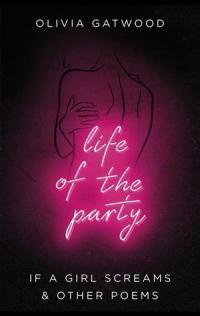 This collection of poetry is chiefly concerned with gendered violence and the various perils – both real and imagined – of existing as a woman. Candid and often narrative driven, Gatwood’s style feels like a blend of poetry and essay, with some excellent turns of phrase that punch you in the gut.
This collection of poetry is chiefly concerned with gendered violence and the various perils – both real and imagined – of existing as a woman. Candid and often narrative driven, Gatwood’s style feels like a blend of poetry and essay, with some excellent turns of phrase that punch you in the gut.
It may seem strange to complain about too much of a good thing, but the downside of the collection for me was the sheer length. Not only are individual pieces often longer than your typical poem, the selection as a whole is vast, which leaves the book feeling bloated. While a tight thematic focus is often to a poetry collection’s credit, in this case it leads to a feeling of re-treading the same ground. By the rules of diminished returns, the strongest pieces are swallowed up, losing some of their impact.
Still, Gatwood’s frank, contemporary approach to feminist writing will undoubtedly resonate with many. Her queer perspective and occasional experimentation with form make her a poet I would read again; only next time, I would hope for a more selective offering.
Plunge by Joe Hill & Stuart Immonen
Published by DC Comics, 2020
Rating: 



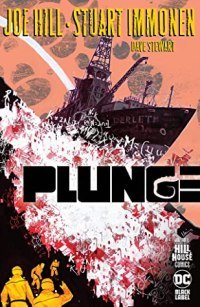 This graphic novel is essentially a love letter to all things 80s horror, with particular references to The Thing and Aliens. In the wake of a tsunami, the wreck of a ship that disappeared 40 years ago begins to send out a distress signal for the first time. We follow the group assembled to investigate. As you’d expect, what they find is more than a little disturbing; the ship and its neighbouring island not quite as deserted as they first appeared.
This graphic novel is essentially a love letter to all things 80s horror, with particular references to The Thing and Aliens. In the wake of a tsunami, the wreck of a ship that disappeared 40 years ago begins to send out a distress signal for the first time. We follow the group assembled to investigate. As you’d expect, what they find is more than a little disturbing; the ship and its neighbouring island not quite as deserted as they first appeared.
There’s no denying the story takes some wild turns. Embracing the almost camp levels of drama makes for an enjoyable ride, however. The tone is reminiscent of the aforementioned sci-fi horror classics, which lends the whole thing an air of nostalgia, and I enjoyed the way it fully embraced some tropes of the genre while playfully subverting others.
There are some lapses in logic and moments of clunky dialogue, but these are made up for by memorable body horror and striking visuals. Indeed, Immonen’s art is excellent, the characters feeling distinct and expressive, and the horror sequences suitably unsettling.
Flawed but fun, this is sure to please those looking for a fresh take on old-school sci-fi chillers.
July 10, 2021
Brood by Jackie Polzin | Book Review
Brood by Jackie Polzin
Published by Picador, 2021
Rating: 



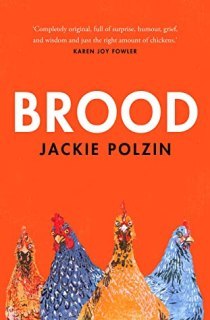 Ostensibly about a woman’s attempts to look after a small brood of chickens, Jackie Polzin’s novel is an understated look at grief and motherhood.
Ostensibly about a woman’s attempts to look after a small brood of chickens, Jackie Polzin’s novel is an understated look at grief and motherhood.
It becomes clear early on that our narrator has suffered great tragedy in her attempts to have a child, but very little of the book’s word count is dedicated directly to this fact. Instead, her borderline obsessive quest to keep her four beloved chickens alive – which makes for oddly compelling reading in and of itself – transcends into a clever look at trauma. By channelling all of her focus and anxieties into the care of her feathered friends, we see how throwing yourself into a project can offer much needed distraction, structure, and purpose when you may otherwise feel unmoored.
Having internalised guilt, it is also apparent that our narrator is setting herself a challenge: Does she have what it takes to be a mother? Can she safeguard and nurture life? I don’t want to spoil specifics, but suffice to say Polzin shrewdly explores the idea that we must absolve ourselves of misplaced blame. Sometimes, we can have all the best intentions and do all the right things, but it simply isn’t meant to be; the universe having its own plans. While sad, this conclusion is far more realistic than a happily ever after, providing a glimmer of hope that, while never easy, moving on from loss is indeed possible.
Though there’s an air of pathos that hangs over the narrative, it is also unexpectedly funny at times. This works on a number of fronts; offering much needed relief, adding depth to our protagonist, and exploring the close connection between grief and humour – the latter often essential in coping with the former. By keeping our narrator nameless, it is perhaps easier for the reader to project their own empathy and experience onto her, but it also speaks to the notion of identity: who is this woman if she cannot fulfil her desire to become a mother? I liked this creative choice, but more could have been done to comment on what it says about society that many women feel incomplete without having borne a child.
On that front, I do think the novel would have benefitted from a more direct tackling of its central themes in its final pages, rather than continuing to (deliberately) skirt around the issue. This alone would have greatly enhanced the established idea that we must all confront our pain in time. And while it does chime with the concept of fate within the realms of life and death, I would argue the book’s outcome becomes obvious long before we reach it.
Addressing well-worn themes from a unique perspective, the strength of Polzin’s prose, coupled with the subtlety of her craft, elevates Brood considerably. The result is a story that is smart yet hugely readable, and which improves the more time I take to mull it over.
July 7, 2021
Indelicacy by Amina Cain | Book Review
Indelicacy by Amina Cain
Published by Daunt Books, 2020
Rating: 


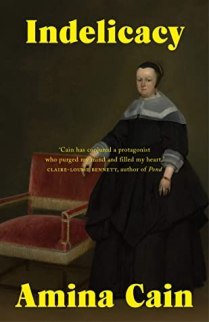 This is one of those reads that’s tricky to quantify my feelings for. In a nutshell: I liked it, but I wanted to love it; and I think it’s a good book, but it had all the component parts of a great one.
This is one of those reads that’s tricky to quantify my feelings for. In a nutshell: I liked it, but I wanted to love it; and I think it’s a good book, but it had all the component parts of a great one.
Set in an undisclosed time and place – though reading predominantly like Victorian Britain – we follow the first-person narration of Vitória, a young woman who works as a cleaner in a museum. Captivated by the art it houses, she longs to be a writer, discussing and critiquing the works rather than tidying up around them. To achieve this, she resolves to marry a wealthy man so she can afford to leave her job and pursue her dream. But it soon becomes clear that climbing the social ladder will not be enough to grant her true freedom.
There’s so much to love here: Simple yet brilliant prose; a snarky, headstrong protagonist; an immersive atmosphere; well navigated themes of class, gender roles, desire, and loneliness. The trouble is it never reaches a crescendo. The book is described as “a ghost story without a ghost”, and while this is reflective of the cloying tone and the constant feeling that we’re building towards some kind of breaking point, it suggests a sinister turn that simply never comes. This, coupled with some very well established, though frustratingly unexplored queer undertones, left me feeling as though the book could have hit home its points about suppression and longing with much greater power. Instead, it sets up all the right ingredients and then fizzles out somewhat.
Still, I can say I genuinely enjoyed the time I spent with this novel, and I would certainly check out more from Amina Cain. I think it’s also worth pointing out that, though I said the book predominantly reads like it’s set in Victorian Britain, occasional fleeting references hint at a more modern timeframe. This subtle yet clever device leaves you to consider how much things have really changed for women over the years, and the cyclical nature of patriarchal oppression – within the arts and more widely.
July 5, 2021
Manjit Thapp & Chloe Giordano | Mini Reviews
Feelings by Manjit Thapp
Published by Penguin Random House, 2021
Rating: 



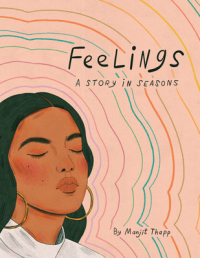 This is a gentle and ruminative look at how much our mood/mental health can be affected by the changing seasons. The text itself is relatively simple, though it does have an air of prose poetry to it. So while it may not discuss any particularly unique experiences or offer up any ground-breaking insights, it is likely to resonate widely.
This is a gentle and ruminative look at how much our mood/mental health can be affected by the changing seasons. The text itself is relatively simple, though it does have an air of prose poetry to it. So while it may not discuss any particularly unique experiences or offer up any ground-breaking insights, it is likely to resonate widely.
If you suffer from anxiety or bouts of depression (particularly SAD), you are sure to feel seen by Thapp’s musings. Regardless, the real draw here is her stunning artwork. A dreamy colour palette and a playful use of structure and layout elevate this quasi-graphic-memoir considerably. I will certainly come back to this to soak up the visuals, and will be keeping an eye out for more of Thapp’s work.
The Embroidered Art of Chloe Giordano
Published by Search Press, 2019
Rating: 



 I’ve been an admirer of Giordano’s work ever since I took up embroidery myself. Specialising in characterful, hyper-realistic woodland animals, her pieces are brought to life in her own distinct style of thread painting. In this book, she breaks down her creative process – in general terms, and on a piece-by-piece basis. It’s definitely easy to draw inspiration from her work, and though most of us will never come close to her standard, it is a joy to pore over such high-quality reproductions of her designs – the book itself having been produced to a wonderful standard.
I’ve been an admirer of Giordano’s work ever since I took up embroidery myself. Specialising in characterful, hyper-realistic woodland animals, her pieces are brought to life in her own distinct style of thread painting. In this book, she breaks down her creative process – in general terms, and on a piece-by-piece basis. It’s definitely easy to draw inspiration from her work, and though most of us will never come close to her standard, it is a joy to pore over such high-quality reproductions of her designs – the book itself having been produced to a wonderful standard.
If you’re a total newcomer to embroidery and are looking for a book that will walk you through specific patterns or teach you different stitch techniques, this isn’t the one for you. If, however, you already have an interest in embroidery or textile art, and want to marvel at the work of one of the best in the business, this is a gorgeous, well curated retrospective of Giordano’s career so far.
June 30, 2021
June Wrap Up
It’s fair to say I’m in the grips of a slump at the moment, and my June reading definitely suffered as a result. At a glance, I did still get through a decent number of books, but there wasn’t a huge amount of reading in most of them. I’m hopeful I’ll have more success in July, but equally, I don’t want to put too much pressure on myself, as a bit of burnout was inevitably going to catch up with us all eventually. But without further ado, let’s wrap up June!
Books read: 8
Yearly total: 51
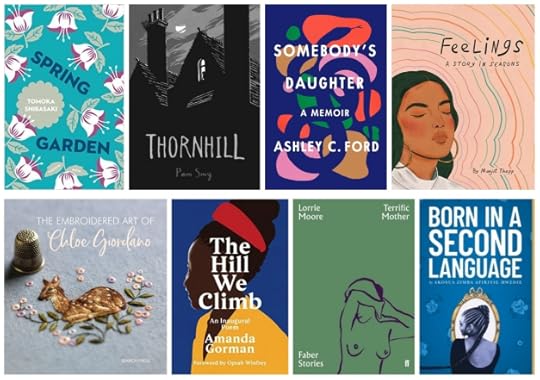
The books I read in June
1. Somebody’s Daughter by Ashley C. Ford
2. Terrific Mother by Lorrie Moore

 | Review
| Review
3. Spring Garden by Tomoka Shibasaki, translated from the Japanese by Polly Barton

 | Review
| Review
4. The Hill We Climb by Amanda Gorman



 | Review
| Review
5. Thornhill by Pam Smy


 | Review
| Review
6. Born in a Second Language by Akosua Zimba Afiriyie-Hwedie


 | Review
| Review
7. Feelings by Manjit Thapp



 | Review to come
| Review to come
8. The Embroidered Art of Chloe Giordano



 | Review to come
| Review to come
Favourite of the month: Somebody’s Daughter
In contrast to my lackluster reading month, June was great in terms of embroidery. I made some more sales through my little Etsy shop, including a couple of custom pieces, which was lovely. Here’s a look at the projects I completed throughout the month.
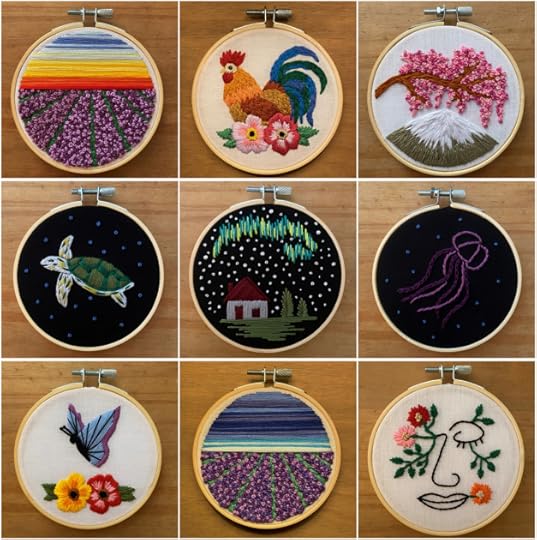
June 27, 2021
Pam Smy & Akosua Zimba Afiriyie-Hwedie | Mini Reviews
Thornhill by Pam Smy
Published by Roaring Brook Press, 2017
Rating: 


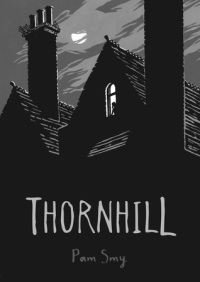 Smy utilises two distinct formats to present the converging halves of Thornhill’s dual narrative. We have the written diary of Mary; kept during her final months at the eponymous orphanage for girls in the 1980s. Its pages detail the horrendous bullying she endures at the hands of the other girls. Running in parallel, and presented entirely in illustration, we follow Ellie in the present day. As she moves into the house across from the now abandoned Thornhill, she spots the figure of a girl lurking in the grounds and determines to investigate.
Smy utilises two distinct formats to present the converging halves of Thornhill’s dual narrative. We have the written diary of Mary; kept during her final months at the eponymous orphanage for girls in the 1980s. Its pages detail the horrendous bullying she endures at the hands of the other girls. Running in parallel, and presented entirely in illustration, we follow Ellie in the present day. As she moves into the house across from the now abandoned Thornhill, she spots the figure of a girl lurking in the grounds and determines to investigate.
There’s a real air of pathos that hangs over Thornhill. Much of its mystery becomes apparent early on, but this doesn’t lessen the sense of impending tragedy and unease that swells as we move towards the climax. I was pleased to see Smy lean into the story’s inherent darkness, ultimately commenting on the insidious nature of loneliness. That said, both narrative threads lag somewhat in the middle, becoming too repetitive, and I would have liked more development for Ellie, who remains largely a blank canvas.
The prose itself is very simple, though this works given the first-person diary perspective, but Smy’s monochrome artwork is rich and atmospheric; definitely the book’s star attraction.
Born in a Second Language by Akosua Zimba Afiriyie-Hwedie
Published by Button Poetry, 2021
Rating: 


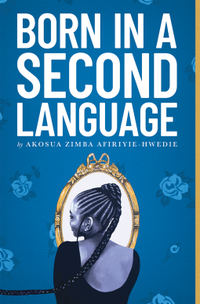 The majority of the poems in this collection focus on Afiriyie-Hwedie’s complicated relationship with language, musing on how much our cultural identity is tied up in our mother tongue; how a disconnect from one can make us feel estranged from the other.
The majority of the poems in this collection focus on Afiriyie-Hwedie’s complicated relationship with language, musing on how much our cultural identity is tied up in our mother tongue; how a disconnect from one can make us feel estranged from the other.
It’s a fascinating topic, and Afiriyie-Hwedie tackles it with nuance, employing a suitably beautiful and engaging writing style. Structurally, a few of the more playful pieces felt a tad too gimmicky for my taste, and as a whole, the collection does feel a little short – though with such a tight thematic focus, I can appreciate the desire to avoid too much repetition.
All-in -all, this is a compact, perceptive collection that is worth checking out.
Thank you to the publisher for a free advanced copy in exchange for an honest review.
June 15, 2021
Three Mini Reviews
Terrific Mother by Lorrie Moore
Published by Faber & Faber, 2019
Rating: 

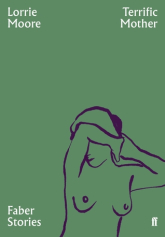 There are huge emotional stakes in the setup, as we purportedly follow a woman’s attempts to re-assimilate into society following the accidental killing of her friend’s baby. Despite this, Moore makes a deliberate – though odd – choice to effectively gloss over the central incident and its immediate fallout, making it hard to connect. Though I liked what the book seemed to be trying to say about grief and self-forgiveness, it was all so cold, vague, and surface level that it felt unearned.
There are huge emotional stakes in the setup, as we purportedly follow a woman’s attempts to re-assimilate into society following the accidental killing of her friend’s baby. Despite this, Moore makes a deliberate – though odd – choice to effectively gloss over the central incident and its immediate fallout, making it hard to connect. Though I liked what the book seemed to be trying to say about grief and self-forgiveness, it was all so cold, vague, and surface level that it felt unearned.
Spring Garden by Tomoka Shibasaki, translated from the Japanese by Polly Barton
Published by Pushkin Press, 2017
Rating: 

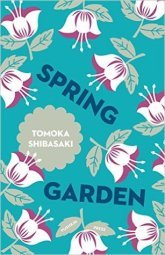 Another example of a book I liked more in concept than in execution, this follows the final few residents of an apartment block marked for demolition. They form an unlikely bond over their shared fascination with the neighbouring “sky-blue” house, which was once the subject of a photography book, and determine to befriend the new owners so they can see it from the inside for themselves.
Another example of a book I liked more in concept than in execution, this follows the final few residents of an apartment block marked for demolition. They form an unlikely bond over their shared fascination with the neighbouring “sky-blue” house, which was once the subject of a photography book, and determine to befriend the new owners so they can see it from the inside for themselves.
This has several of the qualities increasingly associated with contemporary Japanese fiction, in that it’s simply written, subtly quirky, and not much really happens. While in some instances, the themes and atmosphere are enough to sustain interest, here I found it all too aimless, unfortunately. The stakes were simply too low and the pace too meandering to feel any kind of investment. While I like the idea of a book that comments on loneliness and nostalgia against the backdrop of a rapidly modernizing city, I found this particular offering anaemic and forgettable.
The Hill We Climb by Amanda Gorman
Published by Chatto & Windus, 2021
Rating: 



 Gorman’s charisma, eloquence, and performance skill clearly enhanced the impact of this poem when she recited it at the Presidential inauguration. That said, it was still a pleasure to revisit it on the page; its resonance heightened by the deceptive simplicity of its craft. I’m excited to see what she can offer with a full collection.
Gorman’s charisma, eloquence, and performance skill clearly enhanced the impact of this poem when she recited it at the Presidential inauguration. That said, it was still a pleasure to revisit it on the page; its resonance heightened by the deceptive simplicity of its craft. I’m excited to see what she can offer with a full collection.



